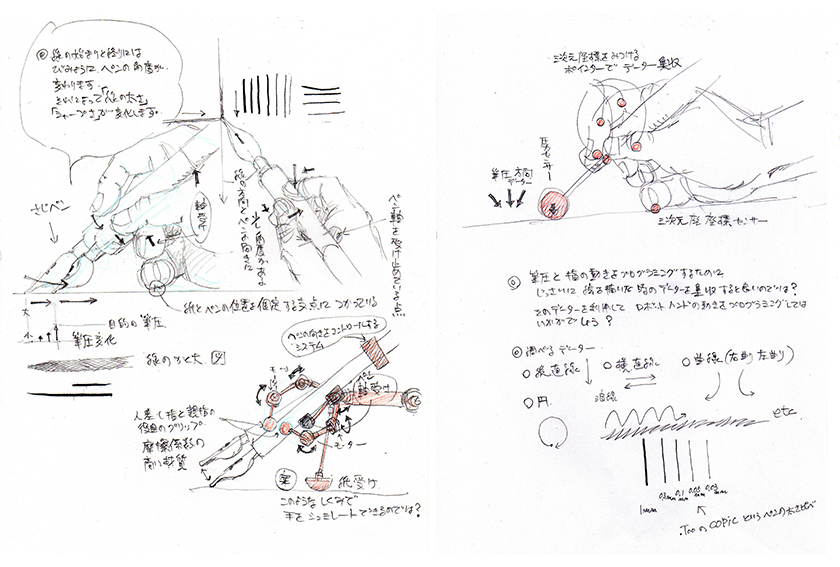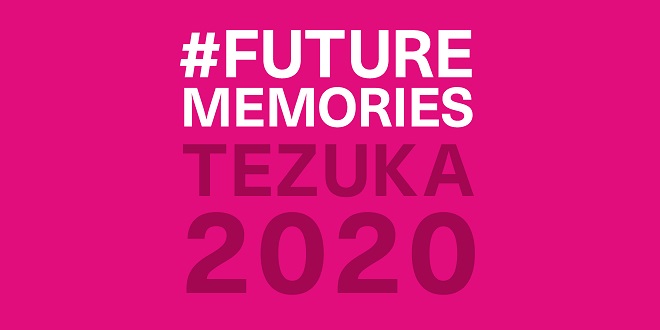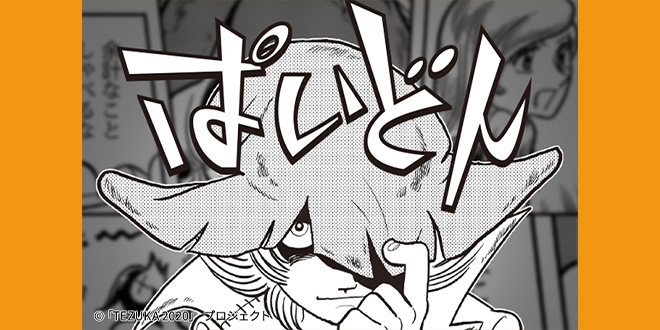Please select your location and preferred language where available.
Sometimes delicate, sometimes bold. The challenge of investing characters with emotions, using a unique touch for each.


- TEZUKA2020 VOL.5 Drawing -
February 26, 2020
Inking pencil sketches is what breathes life into manga characters with vivid personality. Each line drawn by Osamu Tezuka expresses the emotions of the characters, such as joy and anger, grief and pleasure. This project made an unprecedented attempt to reproduce his lines with a robotic arm.
A unique touch to express the emotions of the characters, such as joy and anger, grief and pleasure

Director of Tezuka Productions, Visualist
Emotions live in the strokes of Osamu Tezuka.
He could express a character’s sadness with a single line.
Inking pencil sketches is what breathes life into manga comics. The trick lies in skillfully manipulating the G-nib pen and depicting characters with vivid personality, reproducing Osamu Tezuka’s lines with a robotic arm. In a sense, it is no exaggeration to say that this is the biggest challenge of this project. So then, what is a “Tezuka-like” stroke? I asked Macoto Tezka, who knows better than anyone, for his opinion.
“Each line drawn by Osamu Tezuka has its own meaning. These subtle differences of emphasis express the emotions of the characters, such as joy and anger, grief and pleasure. It’s that aspect that set him apart from other people.”
That’s why Osamu Tezuka’s characters can speak so eloquently to the reader without saying a word.
“Even without the hints of facial expressions and gestures, you can sense the nuances at a glance,” said Macoto.
“It naturally conveys that this character has a pure heart, or that one is evil. That’s the secret of Tezuka’s work. Many people think that if you have a good character and a good story, it will naturally be a good comic, but it’s more subtle than that. They contain more information than you imagine.”
For this project, an attempt has been made to reproduce Tezuka’s lines using AI and a robotic arm. What does Macoto, who observed Tezuka firsthand, think of this?
“Even if you can draw lines with existing tools, trying to express the emotional aspect is what’s difficult. I’ve tried various ways, but I think it will take a little longer to achieve. If we continue to research this, I think it will become possible in the future. I think the key is knowing how to extract the significance of a single line as information.”
However, this doesn’t mean this challenge was a waste. Something else happened in the process of creating characters.
“When trying out various methods, by chance we were able to bring the AI-generated pictures to life in an animated manner to some extent. Osamu Tezuka produced countless anime works, but he didn’t necessarily draw all the pictures himself. However, if this method is developed, it may be possible to create animations using only the lines of Osamu Tezuka. That was a fresh discovery. I realized how interesting this project could be because it would enable us to do this.”
Macoto Tezka
Director of Tezuka Productions, Visualist
Born in 1961, the eldest son of manga artist Osamu Tezuka grew up in a creative environment from an early age, where manga and anime were produced. He is the only person who truly knows what it means to be “Tezuka-like” in this entire project. In 1985, he made his debut as a commercial film director with the movie “The Legend of the Stardust Brothers.” In 1999, he received the Venice International Future Film Festival Digital Award for “Hakuchi: The Innocent.” Currently, he considers himself a visualist, and works as a director of films and animations. His new film “Tezuka’s Barbara” is scheduled for release in 2020.
The future will come when AI verges on the lines drawn by Osamu Tezuka

Manga artist
Tezuka’s lines could be a bit rough or over-the-top at times.
It’s the aspects that aren’t conventionally “attractive” that make them so distinctive.
Shigeto Ikehara is a manga artist who was apprenticed to Osamu Tezuka at the tender age of 18, and watched Tezuka work side-by-side. You’d think that, from the perspective of a former assistant, he would have some complicated feelings about trying to recreate the work of his former teacher, Osamu Tezuka… but Ikehara clearly stated, “No, not at all.”
“At the age of 14, I learned to love the work of Osamu Tezuka, and we worked together until I was 23. One time, I spilled tea on an original manuscript. Only once. That was pretty scary ... There were many other incidents, but I’ve spent many years looking at Tezuka-sensei’s drawings, and I think I know what makes them now. In a sense, I thought his work could never be reproduced, and that’s why I didn’t have any complicated feelings about it.
However, he also gave a positive evaluation of about 20% of the AI-generated character patterns as feeling “Tezuka-like.” “I think the ability to draw these lines starting from nothing is a great strength of the AI,” said Ikehara. In terms of laying groundwork for the next five or ten years, he explained that he feels it is very significant.
“Regarding the AI’s output, of course we need to discern and judge each time whether or not a drawing is ‘Tezuka-like,’ but it’s a question of how we balance the AI’s responses with our own sensitivity. That was a difficult challenge. I used to dream of having an AI brain like Astro Boy, but my expectations might have been too high!” he said, laughing.
In a way, “TEZUKA 2020” has given Ikehara the chance to be involved in Tezuka’s work again for the first time in about 45 years. What does he consider to be “Tezuka-like” lines?
“Tezuka-sensei’s lines have a somewhat rough, over-the-top feeling, but in a positive sense. Sure, some people can draw more beautiful pictures than Tezuka-sensei did, but the less beautiful ones seem more Osamu Tezuka-like. If those could be reproduced after a year or two of research, it would be great. But maybe it’ll be possible if we can increase the amount of data that the AI can learn. The more we make the AI learn, the closer it’ll get. I think that would be great.”
Shigeto Ikehara
Manga artist
As a junior high school student, he was inspired by Astro Boy to start drawing comics, and he joined Tezuka Productions in 1970. Right after joining the company, he worked as an assistant to Osamu Tezuka from the ages of 18 and 23, also gaining experience with storyboards and producing animated adaptions of Tezuka’s works. In 1971, he wrote “Marvelous Melmo” for Tezuka (from an original work by Osamu Tezuka), and made his magazine debut. He serialized Famicom Funji and the Mega Man Series in “Comic BomBom (Kodansha).”
The robotic arm, and how manga artists draw
Osamu Tezuka was able to express emotions such as joy and anger, grief and pleasure, in a single line by skillfully manipulating pen and ink. In the previous sections, we’ve already seen how amazing he was. In this project, we’ve tried to reproduce these lines of Osamu Tezuka’s using a robotic arm to express the characters.

It’s said that Osamu Tezuka’s lines were drawn with the pen angled quite close against the page. As you can see when you actually try it, it’s quite difficult for the pen to move vertically, and when you draw a horizontal line it becomes jagged. Osamu Tezuka showed exquisite control of the pen’s angle and pressure, and he drew his lines as required for the age range and the work involved. This sketch shows a plan devised to reproduce these lines. The pen is gripped by an articulated arm like a human finger, and the pressure is controlled by a pressure sensor. However, there is no modern technology that can simulate the delicate, complex movements of human beings, and the challenge of drawing the ideal line will continue into the future.
Reproducing the delicate strokes drawn by manga artists
The challenging trajectory faced by the robotic arm
The challenge of the robotic arm began with one question—was it possible to simulate the movements and pen pressure of Osamu Tezuka to draw? Here, we present the movements of the robotic arm that was created and the lines it drew.
As Mr. Mori who is an engineer in KIOXIA mentioned, in order to simulate the delicate movements of Osamu Tezuka, the mechanisms of human muscles must be reproduced in a robot. We sought to achieve this goal with our prototype robotic arm. However, we have not yet been able to achieve it to our satisfaction with the current technology.
This robot arm was created with the goal of improving the accuracy of these drawings, specialized for the function of drawing lines faithfully. We chose to use a felt-tip pen to keep the pen pressure constant. It’s now able to draw character outlines accurately. When actually drawing the protagonist of “PHAEDO” on paper, the AI successfully completed drawing the character with the support of the manga artists in charge of drawing.

In the development of any technology, the first step is crucial. Even if only a small step, it’s undoubtedly a great step towards reproducing the pen-handling technique of Osamu Tezuka.
The content and profile are current as of the time of the interview (February 2020).


